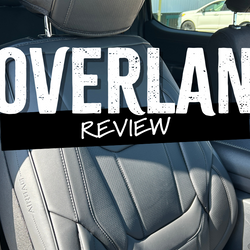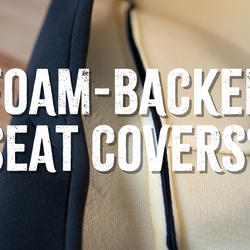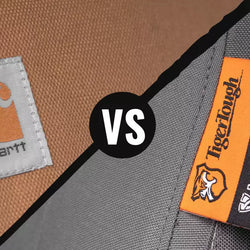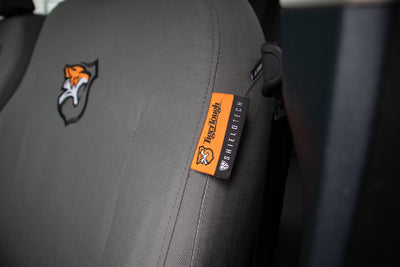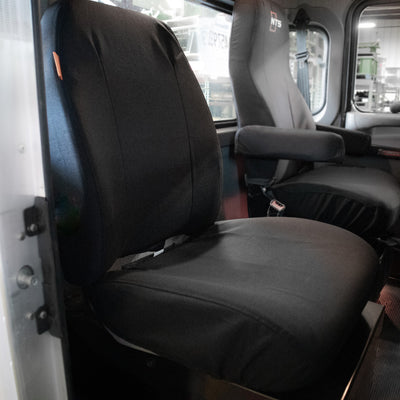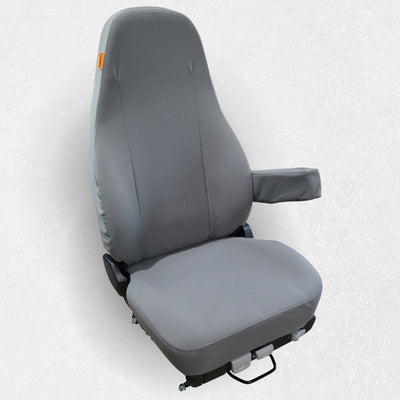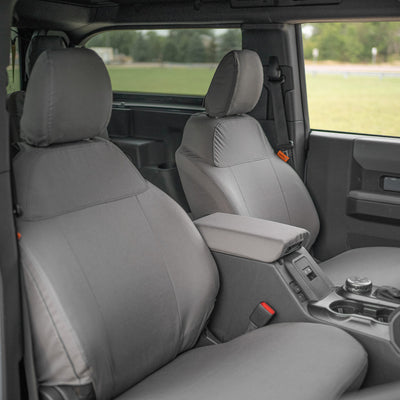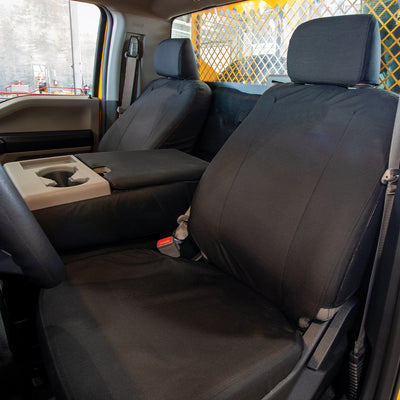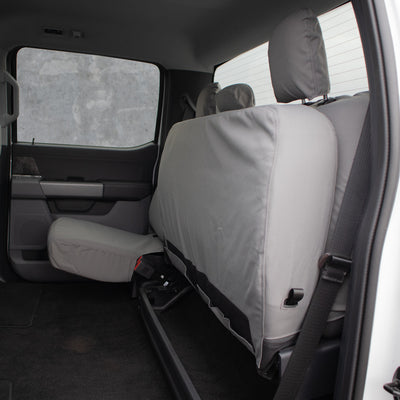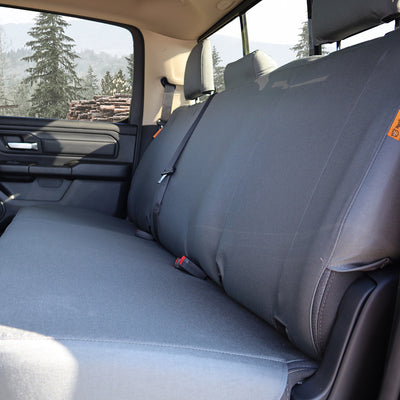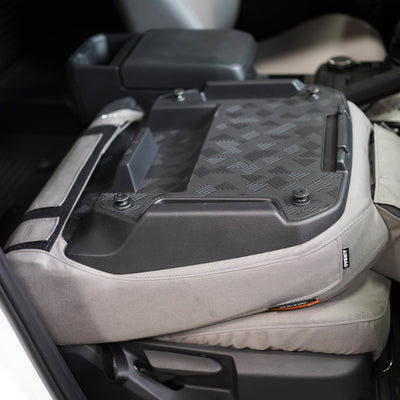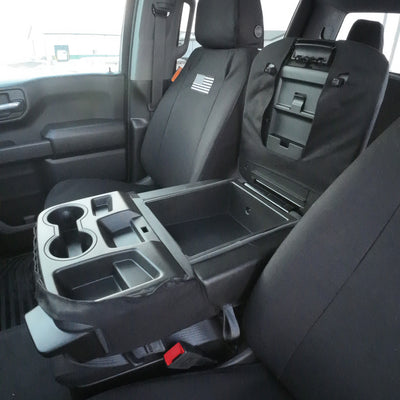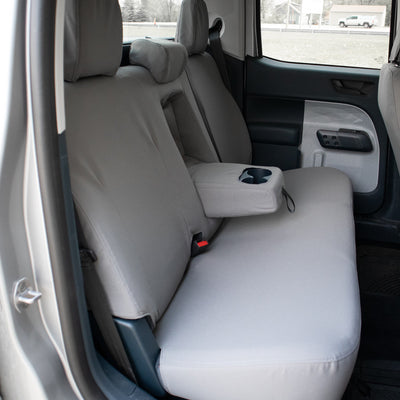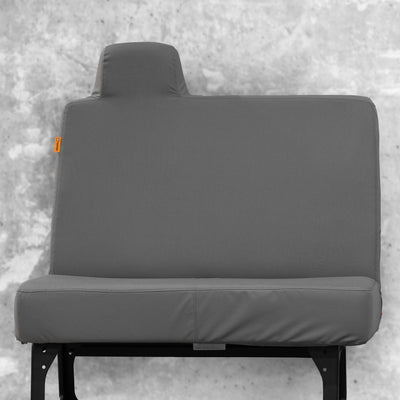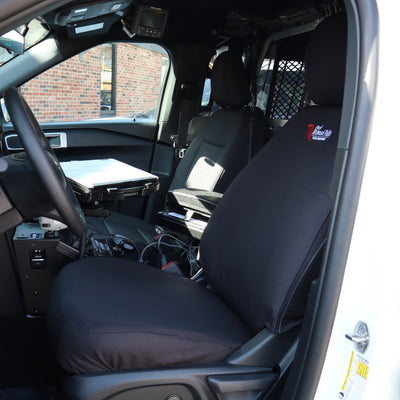Foam-Backed Seat Covers: Are They a Good Idea?
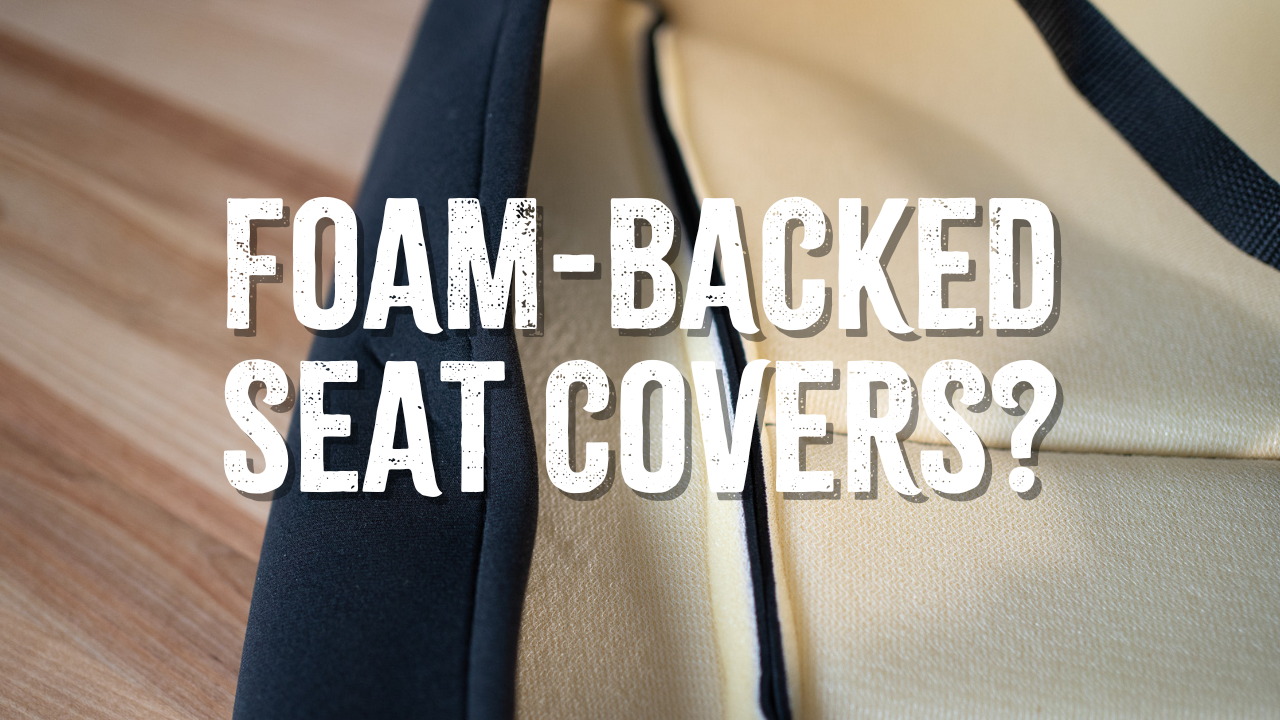
Foam-back seat covers are easy to find, and at first glance, they seem like a smart option. They look great, and the added padding might feel nice when you sit down. But before you throw one in your cart, it’s worth digging a little deeper.
Are foam-back seat covers actually built to last? And do they hold up in real-world conditions?
We’re about to get real nerdy on you.
What Is Foam Backing Anyway?
When a seat cover is described as "foam-backed," it usually means it has a layer of polyurethane foam stitched or laminated onto the back of the fabric. This foam can range in thickness and density, but the general idea is to add some softness and padding between the cover and the original seat.
At face value, that doesn’t sound so bad. But the reality is, foam doesn’t always behave well under pressure…literally.
Foam Breaks Down Faster Than You Think
Foam might not melt in your truck, but it doesn’t need to catch fire to fall apart.
Polyurethane foam starts breaking down long before it reaches the melting point. Full thermal degradation happens at around 302°F (150°C)—hopefully not a temperature you’re hitting unless your truck’s parked in a volcano. But here’s the catch: your cab doesn’t have to get that hot for damage to start.
In the summer, parked vehicles can easily hit 140°F (60°C) inside. That kind of heat, over time, starts to wear on the foam. It softens. It breaks down. It off-gasses more. And it flat-out doesn’t last.
Here’s what that looks like:
-
The foam softens and stops giving proper support
-
It starts releasing more VOCs (you’ll hear more on that in a sec)
-
The aging process speeds up, shortening its lifespan
-
Eventually, it crumbles (literally)leaving gritty bits under your seat and a saggy, sloppy fit
And that’s not the only way foam messes with your seat. In our own heat tests, we found that foam-backed covers actually block seat heaters. The heat doesn’t get through as well, which means your heated seats don’t feel nearly as warm. So not only does the foam break down in heat, it can also rob you of the heat you want.
So if you’re working in high temps or spending all day in the sun, foam-backed covers just won’t hold up. That’s why we don’t mess with foam. We build covers that survive the same conditions you do…no matter how hot it gets.
What about VOCs?
Fair question. That “new car smell” everyone talks about? It’s mostly VOCs (volatile organic compounds), off-gassed from materials like polyurethane foam. And while it might smell fancy, it’s not doing your lungs any favors.
According to research published by the Ministry of Environment and Food of Denmark, foam can release things like toluene, formaldehyde, and benzene, especially when it gets hot. And if you’ve ever opened your truck after it’s been baking in the sun, you know how hot it can get in there.
We’re not trying to scare anyone. Just calling it like it is. Foam’s got its place, but under your seat cover? Not the best idea.
Bacteria and Odors
Foam acts like a sponge—and not the good kind.
Its open-cell structure soaks up moisture from sweat, rain, coffee spills, or even soggy snow gear. And once that moisture gets in, it’s stuck. It can’t dry out, and that damp layer between the fabric and your seat becomes a mold-and-bacteria playground.
Studies have shown that polyurethane foam, especially in warm, humid environments, is a breeding ground for bacteria, including some nasty stuff like E. coli. That kind of buildup doesn’t just stink (literally), it can also break down the foam itself, wrecking the fit and feel of your seat cover.
And about that stink? Foam grabs onto odors like smoke, food, and sweat, locking them in deep. A study published in Building and Environment found that foam traps airborne contaminants and organic smells. In other words: once it stinks, it stays stinking.
Speaking of stink, not all foam-backed seat covers can be machine-washed. Wet Okole is one of our favorite foam-backed seat covers, but they suggest washing with a wetsuit shampoo and a hose. So keep the maintenance in mind if you’re shopping for seat covers with with a little cushion.
If your work truck pulls double duty as your weekend rig, the last thing you want is your seat cover holding onto last week’s job site or yesterday’s lunch.
Why Some Brands Still Use It
Foam is cheap, light, and easy to work with. That’s why you’ll find it in plenty of entry-level or decorative seat covers. Some companies rely on foam to bulk up thinner fabrics, making covers feel more substantial than they actually are. They can also boast that the foam adds a layer of comfort, which it does, but it can come at a cost
But when durability and protection matter most (especially for work trucks, construction equipment, or fleet vehicles) foam-backed covers just don’t cut it.
A Better Alternative: Fabric That Works Hard Without the Fluff
Heavy-duty seat covers built for the real world don’t rely on foam for padding or protection. They’re made with rugged materials like 1000-denier Cordura or Cotton Duck, engineered to take daily abuse without falling apart.
Instead of padding, they focus on:
-
Toughness against wear and tear
-
Water resistance and easy cleanup
-
Breathability (no soggy foam here)
-
A snug, multi-piece fit that won’t shift or bunch
-
An optional antimicrobial treatment to prevent bacteria growth
They may not feel “pillowy,” but they’ll protect your seats for years. That’s a tradeoff most working folks are more than happy to make.
So, Are Foam-Back Seat Covers Worth It?
While foam-back seat covers might offer initial comfort and a snug fit, their susceptibility to moisture retention, thermal degradation, odor absorption, and reduced durability make them less ideal for heavy-duty or long-term use. Opting for foam-free, heavy-duty seat covers ensures better protection, longevity, and peace of mind, especially for those who demand more from their vehicles.
When it comes to your seats, you need something that’s tough, breathable, and built to last. Skip the sponge.
Recent Posts

Best Hunting Seat Covers for Your Truck

Comparing Coverland and TigerTough Seat Covers
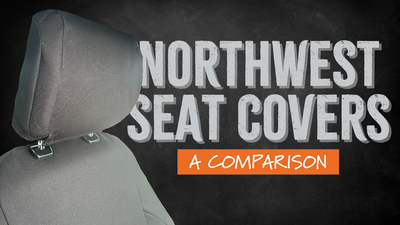
TigerTough vs. Northwest Seat Covers: A Side-by-Side Review

